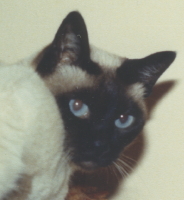| | Physics Question |  |
|
|
| Author | Message |
|---|
NoCoPilot

Posts : 21124
Join date : 2013-01-16
Age : 70
Location : Seattle
 |  Subject: Physics Question Subject: Physics Question  Mon Oct 16, 2017 11:56 am Mon Oct 16, 2017 11:56 am | |
| I’m enjoying cooking with natural gas, which I never had before. One thing that puzzles me though:
When boiling water, the instant I turn off the gas the teakettle stops whistling. Why? The water is still boiling isn’t it? I would expect the whistle to slowly taper off, instead of stopping instantly. |
|
  | |
_Howard
Admin

Posts : 8735
Join date : 2013-01-16
Age : 80
Location : California
 |  Subject: Re: Physics Question Subject: Re: Physics Question  Mon Oct 16, 2017 2:59 pm Mon Oct 16, 2017 2:59 pm | |
| If you turn the fire off as soon as the kettle starts whistling, then the whistling should stop almost immediately. If the kettle has been whistling for a couple of minutes before you cut the fire, then the question becomes more interesting. Is that the case?
|
|
  | |
NoCoPilot

Posts : 21124
Join date : 2013-01-16
Age : 70
Location : Seattle
 |  Subject: Re: Physics Question Subject: Re: Physics Question  Mon Oct 16, 2017 3:03 pm Mon Oct 16, 2017 3:03 pm | |
| |
|
  | |
_Howard
Admin

Posts : 8735
Join date : 2013-01-16
Age : 80
Location : California
 |  Subject: Re: Physics Question Subject: Re: Physics Question  Mon Oct 16, 2017 3:23 pm Mon Oct 16, 2017 3:23 pm | |
| Well, water not under pressure can never get hotter than 212 degrees (100C).
So when the water is boiling, the heat is leaving the water at the same rate it is entering it.
When you stop the source of heat entering the water, the temperature will immediately drop.
Does that sound right? The last thermal systems class I took was in the mid seventies.
|
|
  | |
NoCoPilot

Posts : 21124
Join date : 2013-01-16
Age : 70
Location : Seattle
 |  Subject: Re: Physics Question Subject: Re: Physics Question  Mon Oct 16, 2017 4:35 pm Mon Oct 16, 2017 4:35 pm | |
| When I boil a PAN of water, as opposed to a teakettle, the bubbles continue to rise after I shut off the heat. |
|
  | |
_Howard
Admin

Posts : 8735
Join date : 2013-01-16
Age : 80
Location : California
 |  Subject: Re: Physics Question Subject: Re: Physics Question  Mon Oct 16, 2017 4:57 pm Mon Oct 16, 2017 4:57 pm | |
| What kind of pan is it? If it's cast iron, or even heavy steel, it will retain more heat than the thin metal on the tea kettle. This retained heat will continue to be passed to the water after the burner is turned off. Tea kettles are typically very thin metal and retain almost no heat.
The bubbles that you see in boiling water are created at the point of heat transfer (the boundary layer). That is, the bubbles (212-degree water) are created on the bottom of the pan and then rise to the surface. That's where the steam (pressure) is created (actually, it's water vapor; steam is invisible).
|
|
  | |
richard09

Posts : 4359
Join date : 2013-01-16
 |  Subject: Re: Physics Question Subject: Re: Physics Question  Mon Oct 16, 2017 6:12 pm Mon Oct 16, 2017 6:12 pm | |
| You need a certain amount of pressure to whistle. When you cut off the heat, the whistle dies down in a matter of 2-3 seconds, as I recall, but that doesn't mean that the water isn't boiling hot. It's just not in a "rolling boil" that keeps pushing out lots of steam per second to power the whistle. |
|
  | |
NoCoPilot

Posts : 21124
Join date : 2013-01-16
Age : 70
Location : Seattle
 |  Subject: Re: Physics Question Subject: Re: Physics Question  Mon Oct 16, 2017 6:17 pm Mon Oct 16, 2017 6:17 pm | |
| Okay, those explanations make sense to me. Thanks |
|
  | |
Sponsored content
 |  Subject: Re: Physics Question Subject: Re: Physics Question  | |
| |
|
  | |
| | Physics Question |  |
|
